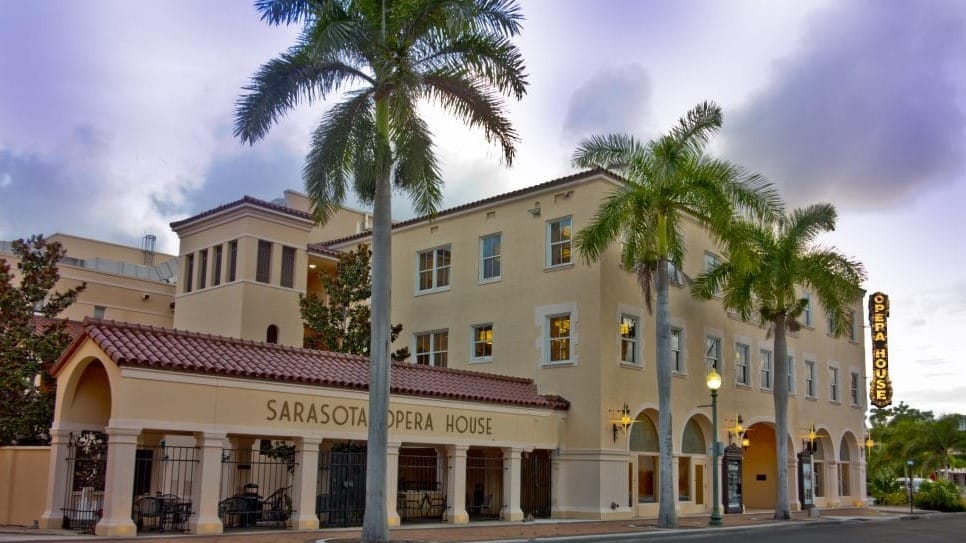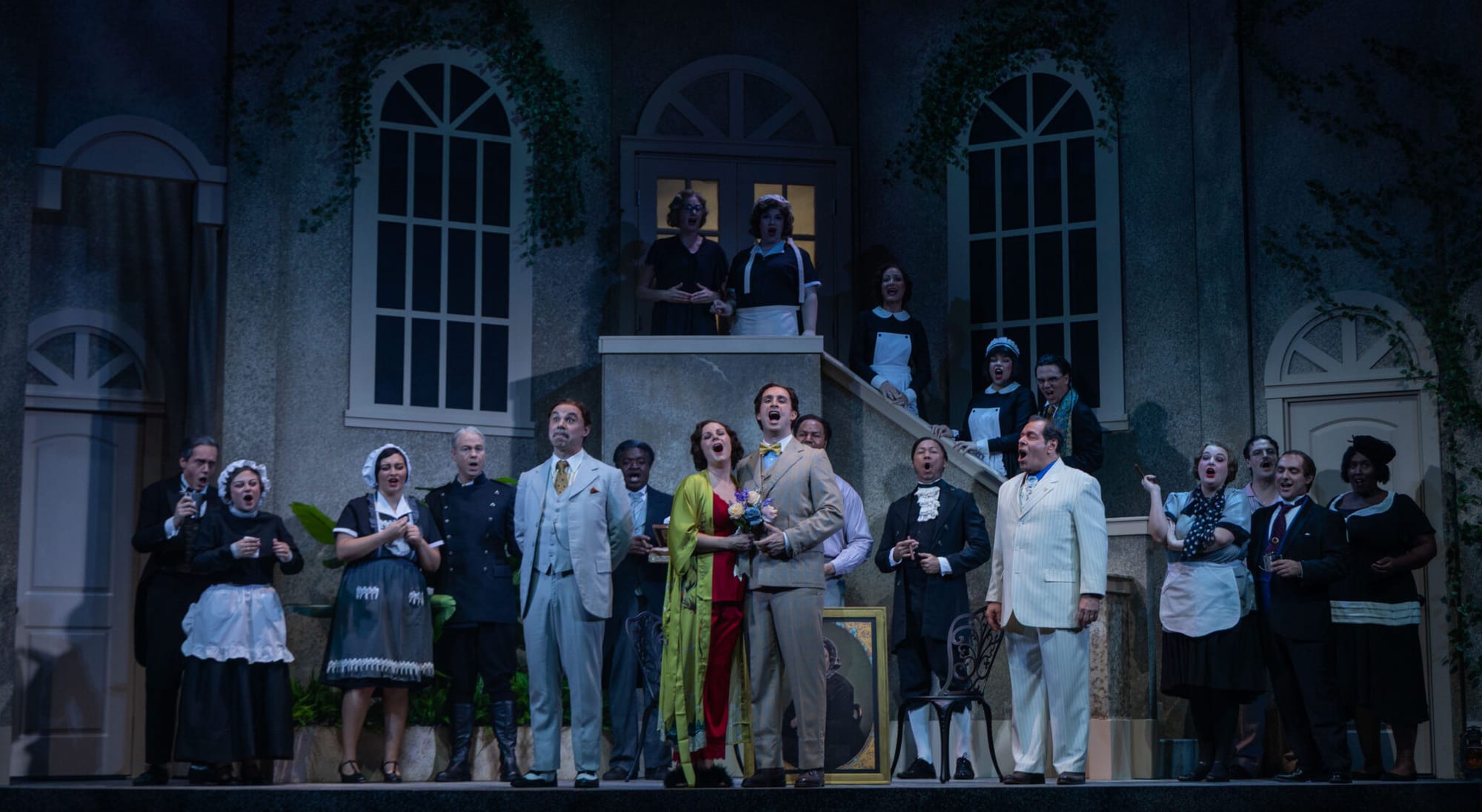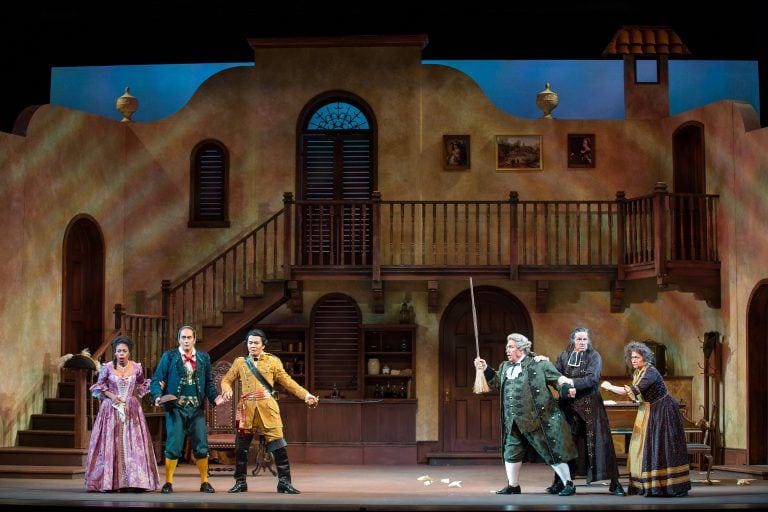Three Companies. Three Milestones. One Big Season for Opera in Tampa Bay

By Avery Anderson
This fall, opera in Tampa Bay isn’t just returning — it’s reflecting, reinventing, and reaching further than ever before.
Three of the region’s flagship companies — Opera Tampa, St. Pete Opera, and Sarasota Opera — are each hitting major anniversaries this season. Sarasota marks 100 years in its historic opera house. Opera Tampa turns 30. And across the bay, St. Pete Opera celebrates two decades of operatic risk-taking on the Gulf Coast.
But this isn’t just a victory lap. In a post-pandemic landscape where audiences are still rebuilding and arts organizations are fighting for relevance, each company is treating its milestone not as a retrospective — but as a dare. What does it look like to stake out opera’s future in a region better known for beaches than baritones?
For Opera Tampa, it looks like a season built around the supernatural — including a new double bill from a local composer, a haunted house thriller, and a sold-out adaptation of The Shining. In Sarasota, it’s a return to a fall season and a recommitment to the American canon. And at St. Pete Opera, it means bridging art forms with cabaret, holiday mashups, and a season that swings from Susannah to La Bohème with stops at Pinocchio and Handel.
This is Tampa Bay opera, 2025. Familiar, maybe. But definitely not playing it safe.
A Haunted Season, A Human Question
Opera Tampa at 30
For its 30th anniversary, Opera Tampa isn’t leaning on nostalgia. It’s throwing open the crypt.
“We wanted a season of the supernatural,” says Robin Stamper, the company’s artistic director. “Everything has some kind of otherworldly element — ghosts, curses, something unexplainable.”

That theme cuts across centuries: from Mozart’s Magic Flute, a mystical romp filled with enchanted instruments and Masonic symbolism, to Verdi’s Macbeth, a bloody power trip haunted by guilt and prophecy. But it’s the newer works that feel most daring.
The Turn of the Screw, Benjamin Britten’s operatic adaptation of the Henry James novella, starts the season with a shadowy psychological thriller. Then comes The Shining — yes, that Shining — adapted into an opera by composer Paul Moravec. Forget the axe-wielding Jack Nicholson: this version leans closer to the novel’s emotional core. “It’s more about love and sacrifice than horror,” Stamper says. “People think it’s going to be scary, and it is eerie — but it’s also deeply human.”
Also in the mix is Love V Death, a darkly comic double bill by St. Pete–based composer Tom Sivak. One piece tells the true story of Carl Von Cosel, a man who lived with the corpse of a woman he loved. The other follows the infamous Typhoid Mary. Morbid? Maybe. But also unexpectedly funny — and, Stamper notes, “very much in the spirit of Sweeney Todd, which brought in a whole new crowd for us last year.”
The goal, Stamper says, is twofold: give longtime patrons something fresh, and give newcomers a reason to walk through the door. “Opera still has this reputation — that it’s hard to follow, that it’s stuffy. But no one gets lost. Everything’s supertitled. And when someone hears these voices live, unamplified, it’s just electric.”
In other words: Opera Tampa wants to scare you — in the best way possible.
A Century-Old Stage, Still Telling New Stories
Sarasota Opera and the 100-Year House
Sarasota Opera’s 2025–26 season isn’t about its own birthday. It’s about the building’s.
The company is celebrating the 100th anniversary of its home, the Sarasota Opera House — a 1926 Mediterranean Revival structure that’s been everything from a vaudeville stage to a silent movie palace. It’s been Sarasota Opera’s base since 1984, and was restored to its full glory in 2007.

To mark the occasion, Sarasota is doing what it does best: treating opera like both heritage and living art. Its upcoming season includes five productions — two in the fall and three during its winter festival — that span four languages, three centuries, and one very timely American revival.
Mozart’s Così fan tutte opens the season with a sardonic wink: a romantic bait-and-switch about fidelity, disguise, and lessons in love. Youth performers then take the stage for Brundibár, a fairy-tale opera originally performed by children in the Theresienstadt concentration camp during World War II. It’s sweet and strange — and more politically charged than it first appears.
In the spring, Puccini’s La Bohème offers bohemian glamour and heartbreak; The Merry Widow delivers romance and comedy in English; and Verdi’s Il trovatore brings sweeping melodrama and mistaken identity.
But the boldest choice may be Susannah, by American composer Carlisle Floyd. A mid-century Appalachian retelling of the biblical story of Susanna and the Elders, it centers a young woman’s dignity in the face of a community that shames her. The production aligns with what would have been Floyd’s 100th birthday — and underscores the company’s investment in American work.
If Opera Tampa is asking audiences to embrace the uncanny, Sarasota is inviting them to reckon with resilience — of spaces, stories, and song.
Intimacy, Experiment, and the Power of Local
St. Pete Opera at 20
At 20 years old, St. Pete Opera is the youngest of Tampa Bay’s three main companies — but also the scrappiest. Housed in the acoustically lush (but relatively small) Palladium Theater, the company has made a name for itself by embracing intimacy, eclecticism, and risk.
The 2025–26 season doubles down on that ethos. It opens not with a European classic, but with Susannah — the same Carlisle Floyd opera anchoring Sarasota’s spring festival. In St. Pete’s hands, though, the piece lands differently: earlier in the season, more exposed, and deliberately stripped of grandeur.
From there, the company swerves. November brings Pinocchio, a family-friendly work by Jonathan Dove that reimagines the familiar wooden boy’s journey with playfulness and bite. Then it’s back to the canon with Handel’s Giulio Cesare, a tale of seduction and power with sharp edges and a baroque score that rewards vocal fireworks.
And in June, the company closes with Puccini’s La Bohème — a bold move, given that Sarasota is staging the same opera just months prior. But timing may be the point. Where Sarasota offers scale and sweep, St. Pete is betting on something different: familiarity turned intimate.
In between, the company’s calendar brims with cabarets, pops concerts, and community-driven events. A Broadway cabaret in October. A multimedia arts celebration in February. A Holiday Sparkle concert in December. Even a Fourth of July Pops spectacular.
It’s a programming approach that keeps St. Pete Opera close to its audience — and makes opera feel like part of the neighborhood, not a world apart.
Legacies Built. Audiences Invited.
Opera’s Next Act in Tampa Bay
Across these three companies, one pattern is clear: none are programming as if they expect to be taken for granted.
Yes, there are the standards — La Bohème appears twice — but the real story of Tampa Bay’s 2025–26 opera season isn’t about repetition. It’s about reinvention. It’s about honoring history without being trapped by it. And it’s about creating new points of entry into an art form that, to many, still feels opaque.
Opera can intimidate. It’s sung in unfamiliar languages. It’s long. It carries the weight of cultural expectation. Even the word itself — opera — arrives with a capital O.
But talk to anyone programming opera in this region, and you hear something different. You hear about ghost stories. Appalachian parables. Women reclaiming their narratives. You hear about voices soaring without microphones, and about ticket prices that, in many cases, rival a movie night.
This season, the barrier to entry may be lower than ever. The stories — from The Shining to Susannah to Brundibár — are grounded in recognizable emotion. The casting is younger, more dynamic. The sets, increasingly, are built here. And the houses — whether 200 seats or 2,000 — are open to anyone curious enough to walk in.
Three anniversaries. Dozens of performances. One region pushing opera forward.
